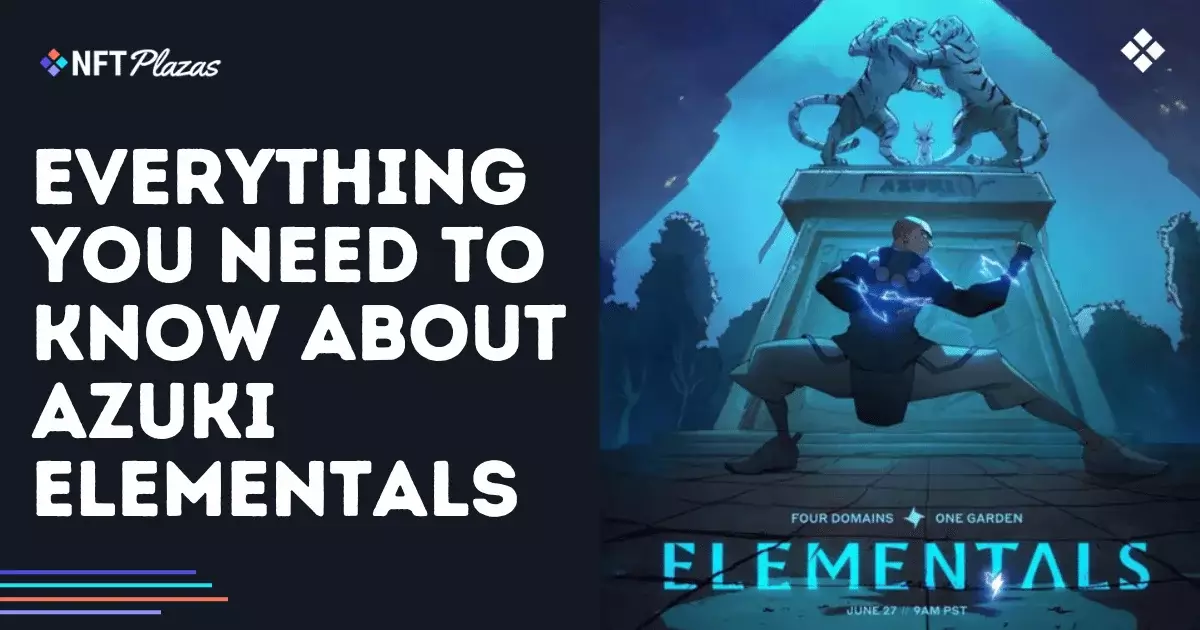The NFT space in 2023 has been characterized by an unprecedented influx of projects attempting to distinguish themselves through art, lore, and community-building. Azuki Elementals represents such an effort, promising a fresh elemental twist within the established Azuki universe. However, beneath the surface of rapid sellouts and aggressive marketing lies a project that reveals the limitations of superficial innovation.
While creators tout Elementals as a new chapter in “Anime 2.0,” the collection largely reconstructs familiar anime-inspired aesthetics without addressing core issues—namely, creativity stagnation and true utility. The characters, inspired by classical elements—Earth, Fire, Water, and Lightning—evoke a sense of novelty but ultimately follow predictable patterns, recycling tropes that have long been exhausted within anime and NFT visual languages. These design choices seem more like marketing lip service than genuine innovation, reflecting a strategy rooted in familiar aesthetics rather than meaningful content.
This superficial differentiation fails to justify the massive hype and rapid presale sellout, which was driven primarily by existing community loyalty rather than distinctive artistic or utility breakthroughs. The NFT space’s obsession with rarity and lore has become a double-edged sword; when projects fail to deliver substantive value beyond collectibles, their initial hype rapidly dissipates once the market adjusts. Azuki Elementals is no exception—it showcases the dangers of riding on established brand recognition without innovating on a meaningful level.
Market Performance: The Great Disillusionment
Despite the initial excitement, the secondary market performance of Azuki Elementals exposes fundamental flaws in the project’s long-term viability. After selling out in just 15 minutes and raising roughly $38 million, the collection’s floor price has plummeted to around 0.24 ETH as of early 2025. This sharp decline raises serious questions about the actual demand and intrinsic value of these digital assets.
It is no coincidence that the hype was largely driven by the loyalty of existing Azuki and Beanz holders, with no real access or utility extended to the broader public. The fact that the full collection was reserved for early supporters created an artificially limited secondary market, which proved unsustainable as market interest waned. Many holders bought in at or near the initial mint price, only to see their assets hemorrhage value, leading to a loss of confidence and a broader downturn for the Azuki ecosystem.
Furthermore, the immediate post-launch response indicated that the market was skeptical of the apparent value proposition. Concerns over artwork monotony, limited utility, and oversaturation highlight a crucial lesson: hype cannot replace genuine utility or creative depth in the NFT realm. The decline of Azuki Elementals’ value underscores how fragile market enthusiasm is when not backed by substantial long-term plans or innovative offerings.
The Community’s Mixed Reactions Reflect Broader Industry Trends
The reception from the NFT community has been predictably polarized. On one side, some enthusiasts cheer the expansion of the Azuki universe, viewing the Elementals as a logical progression in a beloved franchise. Others appreciate the themed characters and the way they tie into the lore-rich “Hilumia” universe. However, critics and skeptics see these efforts as mere cosmetic additions that do little to genuinely elevate the project.
While Azuki has attempted to reward existing supporters—such as granting access to exclusive events, merchandise, and the upcoming metaverse—they have not sufficiently addressed the larger issues: a lack of artistic innovation, technical issues during minting, and concerns over dilution. The rarity system based on traits is helpful to some in understanding market value, but it does little to mask the fact that, after the initial hype, the true value of these assets remains highly questionable.
The fact that many in the community express doubts over whether owning an Elemental will bring any tangible benefit beyond prestige hints at a deeper problem: projects promising utility and community engagement must deliver—not just speculate on future integrations or side projects. Azuki’s efforts to include elements like the upcoming AnimeChain, a layered blockchain for anime content, show foresight but do little to correct the immediate economic fragility caused by their premature launch.
The Overextension of a Promising Ecosystem
In claiming to be part of a broader “Anime 2.0” vision, Azuki appears to be overextending itself, risking the very foundation of their reputation. Their ambitious roadmap, including collaborations with top anime studios, metaverse integration, and a new NFT-driven trading card game, could indeed be revolutionary if executed properly. But such ambitions often lead to overpromising and underdelivering, especially when internal resources are stretched too thin.
The acquisition of Anime.com and the development of the AnimeChain blockchain, while potentially game-changing, seem more like strategic gambits than guaranteed winners. They raise questions about whether Azuki is genuinely committed to the artistic and utility-driven evolution of their ecosystem or merely chasing new revenue streams and hype cycles.
Furthermore, their focus on blending physical goods, digital assets, and future gaming attempts to capitalize on every trending facet of the NFT and entertainment industry, risking consumer fatigue or skepticism. The collection’s launch mishaps reflect the dangers of rapid expansion without sufficient foundational stability. When core assets like the original Azuki and Beanz collections decline in value, the entire ecosystem becomes vulnerable to negative perceptions, which can be difficult to reverse.
This critique hinges on the notion that hype-driven projects like Azuki Elementals offer more flash than substance. While their creative concepts hold superficial appeal, their structural shortcomings and inconsistent utility should serve as cautionary tales for investors and enthusiasts who prioritize long-term value over short-lived trends.

